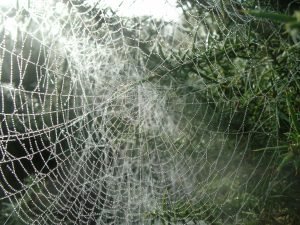November’s wildlife highlights
PUBLISHED ON: 8 NOVEMBER 2024This is a wonderful month to enjoy the last of the autumn colours in the broad-leaved woodlands of the New Forest National Park.
Beech trees are especially colourful, with leaves turning coppery gold, yellow and orange before they drop. Their leaf litter and shady glades make an ideal environment for next spring’s bluebells.

Oaks also puts on their best display in November. The English oak supports whole ecosystems and has more recorded wildlife species than any other British tree.
Look out for yellow needles on the larch: Although not a native tree it’s widespread in the New Forest, and is unusual in being a conifer that loses its needles in autumn.
Now is a good time to enjoy the fantastic variety of fungi before the first frosts arrive. The New Forest is home to around 2,700 of the 12,000 species found in Britain. One of the most common and distinctive is the fly agaric: you’re most likely to spot its white stem and bright red, white-flecked cap under birch trees. Also easy to recognise is the stinkhorn, so called because its conical cap is covered in foul-smelling mucus. Please remember to not pick the fungi and leave them for others to enjoy.
Ivy is probably the last source of nectar and pollen of the year and very important for bees, hoverflies and the common wasps. It flowers between September and November, with the berries ripening November to January. It’s said that ivy berries have more calories gram for gram than a Mars bar, so are very important for birds at this time of year.
On chilly autumn mornings you realise how many spiders make their home in the Forest. Take an early morning walk and spot their webs outlined in dew on gorse bushes and hedgerows.

Overwintering geese are arriving on our shores, as are turnstones and sandpipers which love rummaging through seaweed for tasty snacks.
Out on the heathlands, you may be lucky enough to see one of the very few great grey shrikes that visit the Forest from northern Europe in winter. A little bigger than a starling, it’s known as the ‘butcher bird’ because of its habit of impaling its prey on thorns or spikes of gorse for use as a winter food larder.

The hen harrier is another rare visitor to New Forest at this time of year – a bird of prey almost the size of a buzzard. It spends its time hunting small birds and mammals over the open heathlands where it will also settle, on the ground, to sleep overnight. You can help safeguard this vulnerable species by only walking and riding along the paths across the heaths from late afternoon onwards when they are settling down for the night. Dog owners can also help by keeping their pets with them on the main tracks.

As the trees lose the last of their leaves, rookeries are clearly on view, and the nest- holes of woodpeckers are also easier to spot. You might see spectacular swirling masses of starlings and large flocks of jackdaws, rooks and carrion crows flying to their woodland roosts in the evening.

Bats, dormice and hedgehogs are going into hibernation. Remember to check any garden fires before you light them, as these are cosy places for hibernating hedgehogs – or, even better, rather than burning it all, create a pile of leaves, twigs and branches in a quiet, sheltered corner of your garden for the hedgehogs and other wildlife to move into throughout the colder months.
Main hedgehog photo by Lucy Page.

